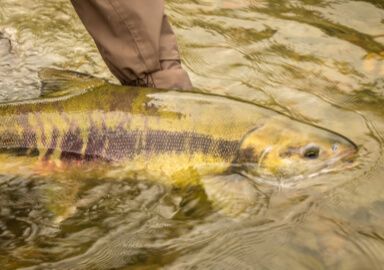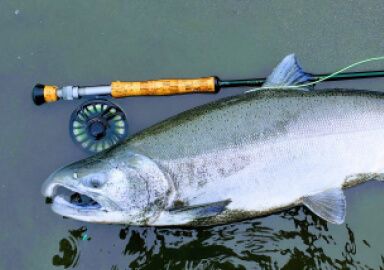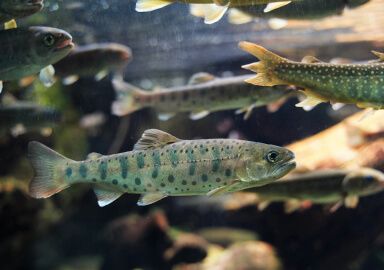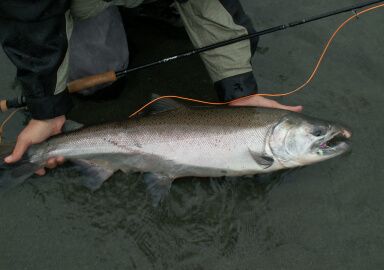Sockeye Salmon
Shining blue or bright red, pound for pound, sockeye salmon are the hardest-fighting salmon in the world, and wild-caught sockeye makes excellent table fare.
View 18 listings
18
listings
–
price starting from
2
countries
–
to the nearest trip
Where and When?
Born in lakes and rivers but spending most of their lives in the Pacific Ocean, sockeye salmon can be found in the eastern Pacific between northern California and northern Alaska, and in the western Pacific from Hokkaido Island in Japan north to the Anadyr River in Siberia. In most regions, June and July are the prime months to fill your freezer with sockeyes. In some sockeye rivers, especially in Alaska, bears will be bulking up on salmon right alongside anglers, so it pays to be careful!
About Sockeye Salmon
Sockeye salmon run in huge numbers up coastal rivers from the Pacific Ocean in early summer. In one of nature’s most amazing migrations, some of these fish travel up to 1,000 miles to spawn and then die in the waters where they were born. When they return to their natal rivers from the sea, sockeyes are a shining blue or chrome color, and at this stage they are called “bluebacks.” This is the prime time to catch sockeyes, as they come out of the ocean and start heading upriver.
These fish undergo a dramatic change in color and appearance as they approach their spawning grounds; they develop hooked jaws and green heads, and eventually their bodies turn bright red. At this stage sockeyes are also called “red” salmon. Sockeyes generally weigh five to 15 pounds and can be two to three feet long. Some landlocked populations of sockeye salmon live their entire lives in fresh water; these fish are referred to as kokanee salmon.
How to Catch?
Fishing methods that work for other salmon species generally do not work for sockeye salmon because these fish are plankton eaters and have little interest in attacking a baitfish imitation. They swim close to shore as they head upriver, so they can be caught from the bank or by wading.
To catch sockeyes, most anglers use a technique called “lining.” The lure can be a sparsely tied fly, a small piece of bait, or sometimes even a bare hook. As the fish swim along the bottom, their mouths are continually opening and closing. Cast the lure so the leader moves across the fish’s mouth. When the fish veers away from the line, the hook catches the corner of the salmon’s open mouth, and a tremendous fight ensues as the fish races away. There is some controversy regarding whether the fish actually bites the lure or is simply hooked by the action of moving away from the line.
Trolling is also a successful method for catching sockeyes, although it requires carefully matching the depth and speed of the swimming fish.















